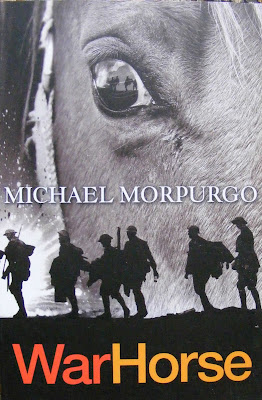PBOTD: 12th February, Golden Gorse - Moorland Mousie
Golden Gorse was the pen name of Muriel Wace. Her own early experiences of ponies were a world away from the sensible, ordered process she recommended in her first book, The Young Rider's Picture Book (1928). Muriel was the youngest of five sisters, whose mother died when she was eight. Her father, Ashley Maude, was a keen rider, but not particularly keen on serious tuition for his family. He bought the girls two unbroken Welsh ponies. One was so wild it was sold in pretty short order. Knowing what the one left was like, I do rather wonder just what depths that pony plumbed.
Ashley Maude attempted to break the remaining pony in, but found long reining dull, and passed the pony over to his daughters. The pony was more than up to anything the five of them could think of, and amused itself by scraping them off on whatever was handy - overhanging branch, or park railings. Ashley Maude was unimpressed by what he saw as his daughters' inefficiencies until he rode the pony himself. After it tried its tricks on him, it was sold. Muriel was, fortunately, undaunted, and she and her sisters went on to ride the local cattle, filling the cows' heads with dreams of jumping, which unfortunately they fulfilled by jumping out of their field, which did not go down well with the farmer.
Muriel Wace saw the increasing interest in ponies and riding after the First World War, and no doubt from her own experiences, knew how important it was to start both children and ponies off in the right way. Moorland Mousie, which was her first work of fiction, published in 1929, was one of the best of those stories where the pony tells its own tale: pretty much the only model for a horse story until the 1930s.
 |
| Moorland Mousie in his pomp |
 |
| The classic Exmoor head - Moorland Mousie |
The book has remained tremendously popular. Sadly I can't show pictures of it because of copyright restrictions. It was originally published by Country Life in 1929, and was reprinted many times, with the last Country Life edition I'm aware of appearing in 1958. The book has now been reprinted by the Moorland Mousie Trust.
~ 0 ~
For more on Golden Gorse, see her page on my website.
You can read more on the Moorland Mousie Trust, and their republication of Moorland Mousie here.


Comments